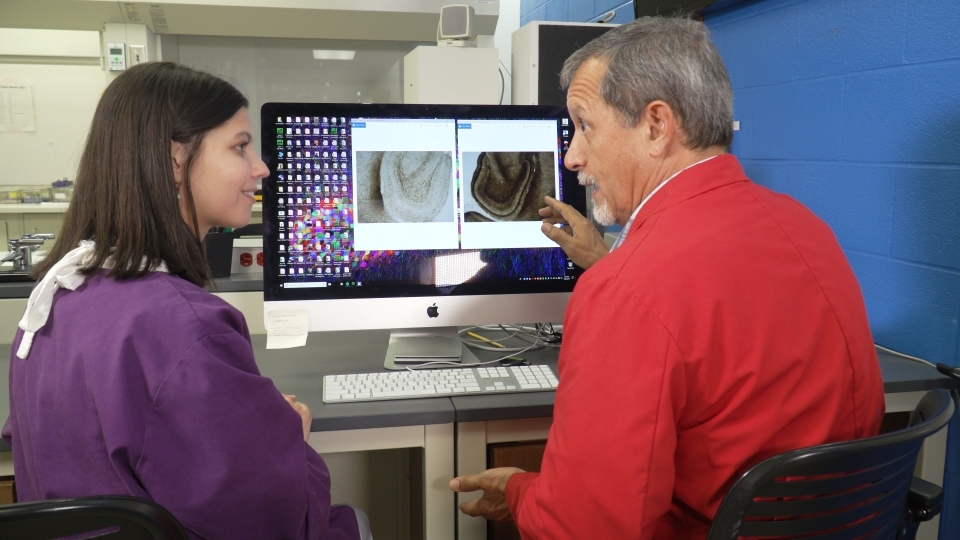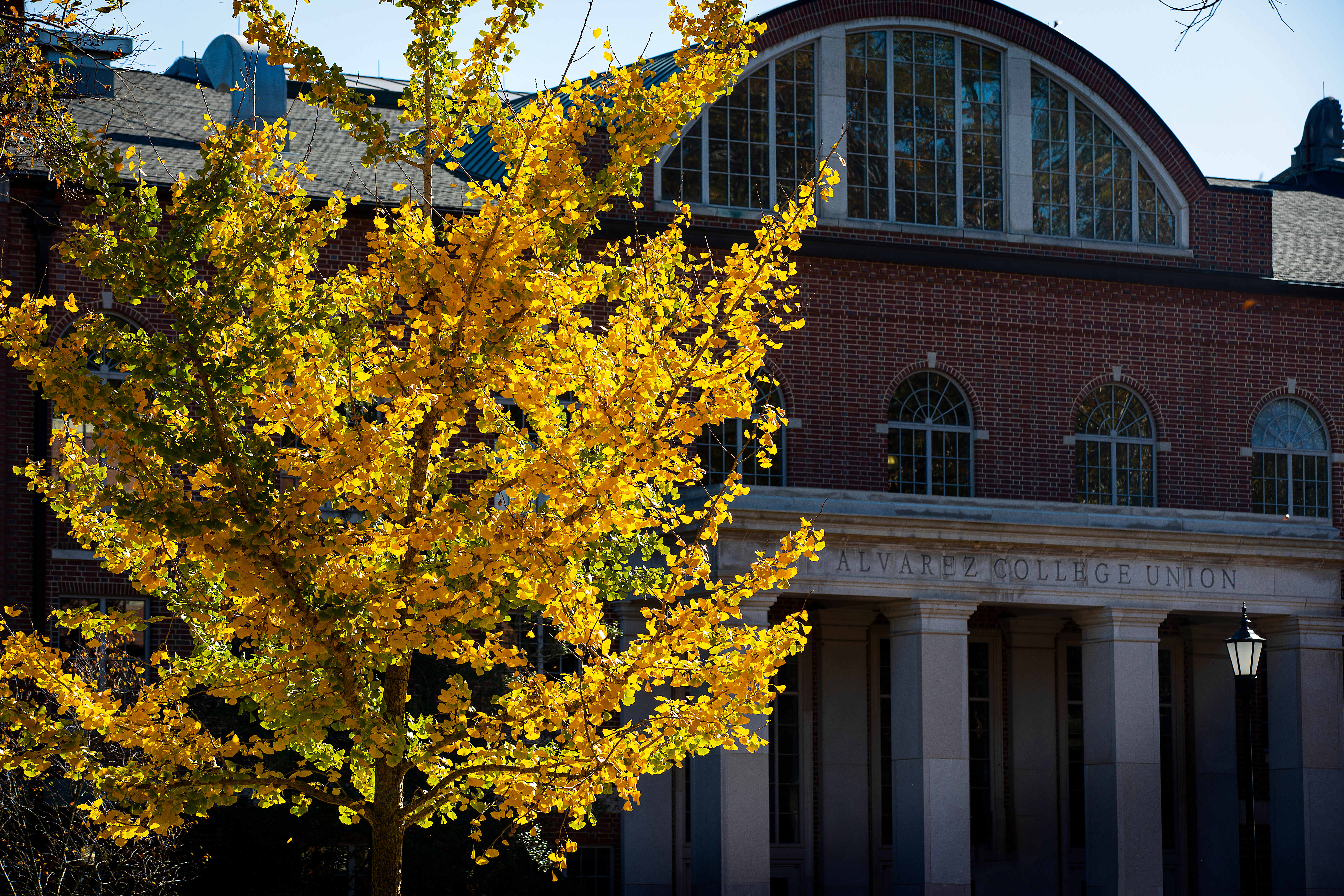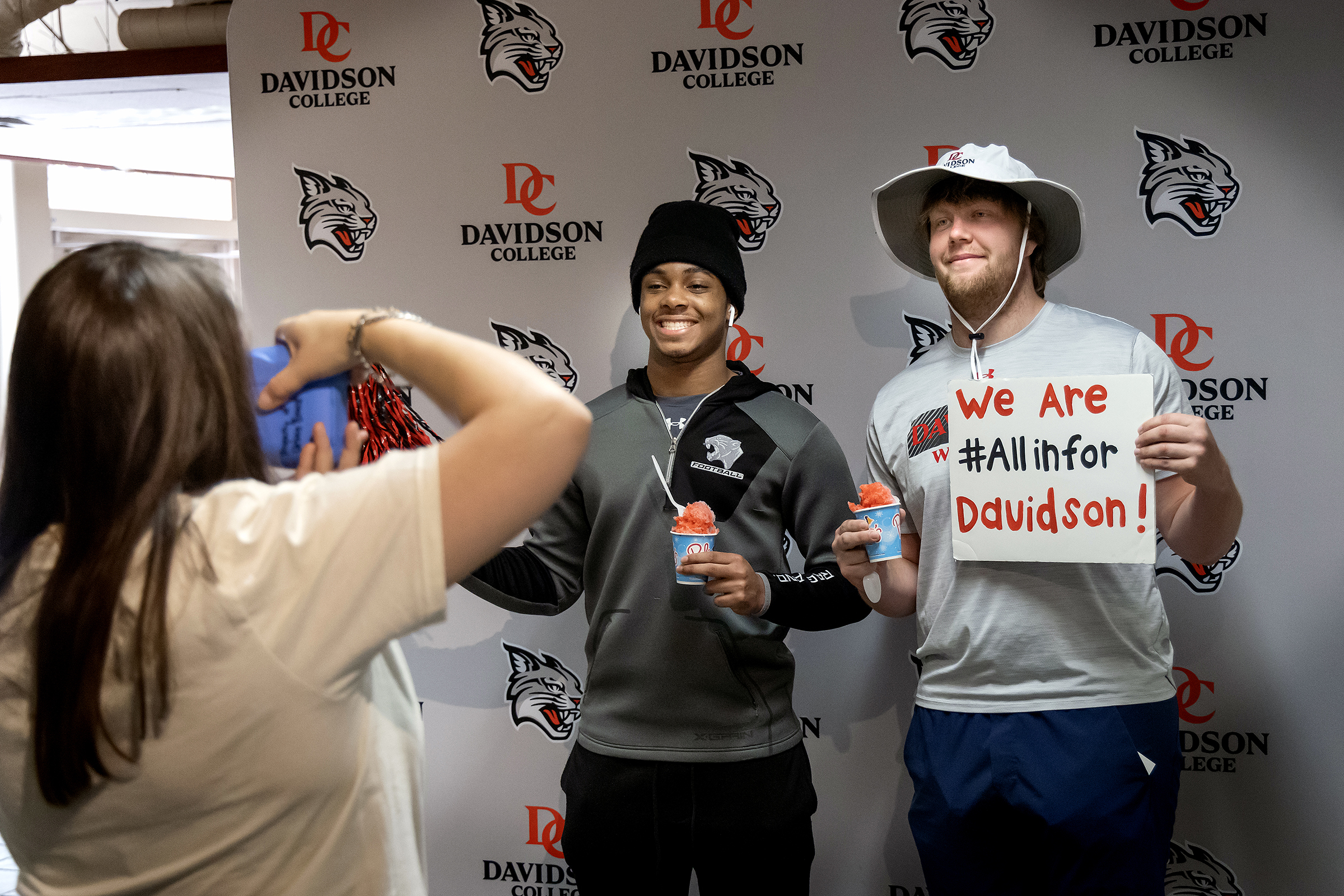Davidson Researchers in Search of Alzheimer’s Causes, Cure
November 26, 2019
- Author
- Mary Elizabeth DeAngelis

Katie Barlis '20 studies the structures of the brain concerned with learning and memory in Professor Julio Ramirez's neuroscience lab.
Performing brain surgery on rodents isn’t for the squeamish, but Katie Barlis and Gaby Soden want answers.
Their aim is to find differences in how rats’ brains recover after an injury to the region that controls memory. The ultimate goal: To see if intervention could offer potential cures for Alzheimer’s disease.
November is Alzheimer’s Awareness month, a time to bring attention to the disease that afflicts 5.8 million Americans and is the country’s sixth leading cause of death. It’s also a time when families get together for the holidays. In some cases, that may include difficult conversations about an elderly relative who’s exhibiting symptoms.
At Davidson College, student researchers like Barlis ’20 and Soden ’20 are seeking clues to what makes women more likely to get the disease, and what can be done to prevent, stop or reverse memory loss.
Though these questions are not new, R. Stuart Dickson Professor of Psychology Julio Ramirez believes they’re on to something.
Hannah Doyle ’19, Barlis and Soden recently presented their research at the annual Society for Neuroscience conference in Chicago. About 28,000 researchers from around the world attended.
Ramirez has studied Alzheimer’s disease for decades. He says there’s been very little published about the female rat brain’s capacity to recover after memory loss resulting from injury to the entorhinal cortex—the area that degenerates in Alzheimer’s disease.
The Davidson team aims to change that. Like many scientists, they experiment with rats, which have litters that are genetically nearly identical and have relatively short life cycles.
Their research suggests female rat brains undergo changes in brain connections, or neuroplasticity, like male rat brains. In some cases though, the females may show even more neuroplasticity.
The researchers suspect the link is related to hormones. Female rats with elevated estrogen levels had more successful brain recovery after an injury than males and females that weren’t producing estrogen.
That could be one reason why post-menopausal women are more susceptible to the disease than men.
“In previous work, my Davidson students and I discovered that if we promote the growth of new pathways in a structure that contributes to memory after a cortical injury, we can restore memory function,” Ramirez said. He calls it a promising piece of the vast research into the disease.
“We still have a long way to go, and research usually has more failures than successes, but I’m very hopeful there will be a cure someday,” Ramirez said. “There have recently been some exciting discoveries in Alzheimer’s research.”
Prevention, Signs and Hope
There’s still so much that’s unknown about Alzheimer’s causes and cures. The biggest suspect is age. We’re living much longer than our ancestors, and Alzheimer’s is normally a disease of the elderly.
A buildup of plaque and tangles in the brain is common in Alzheimer’s patients, and researchers are trying to determine their role in the disease.
Genetics also come into play. Carriers of a form of the gene APOE4 appear more likely to develop Alzheimer’s than non-carriers.
Can you prevent Alzheimer’s?
Again, there’s no sure answer but Ramirez says the advice he offers people is, “what’s good for the heart is good for your head.”
Regular physical exercise appears to help people maintain mental sharpness. Healthy eating and controlling blood pressure, cholesterol, and diabetes is important. Socializing and intellectual stimulation can also play a protective role, he said.
And that’s why it’s important to check in with older friends and relatives.
Some signs of aging are normal, such as misplacing your reading glasses or car keys; forgetting what you do with the glasses or car keys is not.
Repeatedly asking the same questions, forgetting where you are or how you got there, withdrawing from social activity and changes in grooming habits are other warning signs, according to the Alzheimer’s Association.
Soden said her grandfather developed dementia, which is often related to Alzheimer’s, before his death. She knows the devastation that families feel.
“I think there’s nothing worse than losing your mind,” she said. “You no longer recognize the people you love. My grandfather thought his sons were kidnappers holding him hostage. He became angry and completely withdrawn—just a completely different person than the one we knew when we were younger.”
Barlis, a psychology major from New Jersey, and Soden, a neuroscience major from North Carolina, both plan to continue in research fields after graduation.
Do they ever see themselves finding a cure for Alzheimer’s?
“It’s frustrating to think that billions of dollars have gone into research that keeps hitting a wall—that can be demoralizing,” Soden said. “But I don’t think that’s a reason to stop trying. My goal is to further our knowledge.”
Barlis smiles at the question.
“Not by myself,” she said. “I don’t think it’s going to be just one person. But every contribution you make is a step in the right direction. I’m hopeful that I can contribute something.”



